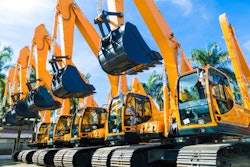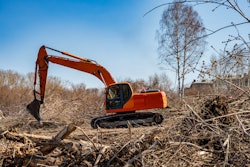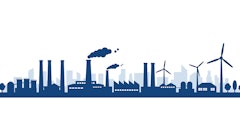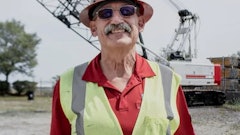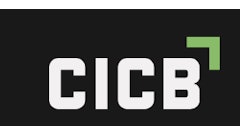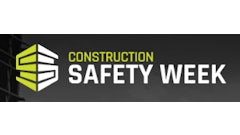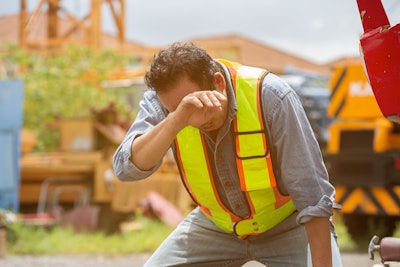
Extreme heat is the leading cause of weather-related work fatalities in the United States, with construction workers accounting for more than a third of all heat-related deaths.
As average daily temperatures continue to rise, it’s critical to protect workers from extreme heat and heat-related risks.
Understanding Heat Stress and Heat-related Illnesses
Outdoor workers, especially those in construction, are at greater risk of heat-related illnesses due to their work environment. These employees commonly work in heavy, protective gear that traps heat. They conduct demanding tasks such as lifting and carrying heavy materials and tools, and often are on job sites with limited shade for cooling.
That means your employees are more prone to heat stress, which occurs when the body is unable to regulate its core temperature. Prolonged exposure to extreme heat can cause fatigue, lack of concentration and slower reaction times in employees. This can result in a higher rate of workplace errors, increased accidents and injuries and reduced work quality. Safeguarding against these risks is essential not only to protect your employees, but to maintain productivity.
Long-term exposure to high temperatures can also lead to severe health complications, such as kidney damage, cardiovascular issues and even premature death.
Employers and employees alike must recognize these risks, the associated symptoms and implement heat stress prevention in construction through comprehensive mitigation strategies.
Recognizing Signs of Heat Stress in Employees
Working in hot and humid conditions can significantly impact your employees’ well-being. Therefore, it’s important to recognize the signs of heat stress in construction employees, including:
- Heat rash: The formation of clusters of red bumps, often appearing on the neck, upper chest and skin folds.
- Heat cramps: Painful muscle spasms due to dehydration and loss of nutrients from excessive sweating.
- Heat exhaustion: Symptoms include heavy sweating, dizziness, fatigue, rapid pulse, nausea, headache and low blood pressure.
- Heat stroke: A life-threatening condition that requires immediate medical attention. It includes symptoms such as confusion, slurred speech, vomiting, rapid breathing and a high body temperature.
8 Strategies to Protect Workers From Extreme Heat
You can help your outdoor workers avoid heatstroke risks by following these proactive precautions.
1. Understand and assess job site heat risks. Conduct a heat risk assessment to identify high-risk areas and tasks so you can activate your company’s heat safety measures at current and future job sites.
2. Implement engineering controls. To reduce heatstroke risks for outdoor workers, your construction sites should include solutions such as:
- Shaded rest areas
- Fans and air conditioning in break areas
- Insulated workstations to block radiant heat
- Ventilation systems
3. Provide heat stress training. Implement training programs for heat stress prevention so your teams know how to prevent and spot heat-related illnesses. Training should cover how to:
- Recognize heat stress symptoms
- Treat heat-related illnesses
- Stay properly hydrated
- Work safely in hot environments
4. Monitor weather conditions and adjust schedules. On days with extreme heat warnings, protect your teams and business by considering whether to:
- Delay non-essential tasks
- Shorten work shifts
- Increase break frequency
- Provide electrolyte-replenishing drinks
5. Establish administrative controls. Reduce heat exposure and improve worker safety by including key administrative strategies:
- Implement a buddy system on days with heat advisories
- Rotate workers to minimize prolonged heat exposure
- Increase work-rest cycles with breaks in shaded or cooled areas
- Schedule physically demanding tasks during cooler parts of the day
- Activate an acclimatization program for new or returning workers
6. Have workers wear protective gear designed for hot weather. Gear designed specifically for hot environments will help reduce your employee’s heat-stress risks. Encourage employees to wear clothing that is:
- Made of lightweight, breathable fabrics
- Light colored
- Loose-fitting (when appropriate)
UV-protective
Hats should have wide brims. Where personal protective equipment (PPE) is required, it should be designed for extreme heat environments and should not contribute to excessive heat retention.
7. Provide hydration and cooling stations. Proper hydration is essential to prevent heat-related illnesses. Consider these hydration tips for construction workers:
- Ensure cool water and electrolyte drinks like Gatorade are readily available.
- Encourage workers to drink water every 15-20 minutes, even if they don’t feel thirsty.
- Educate employees on how to recognize dehydration symptoms, such as urine color and reduced output.
8. Create an emergency response plan. Take immediate action and seek medical attention if heat-related illness is identified.
- Call 911 immediately if signs of heat stroke are present — even if you’re in doubt.
- Move the person to a cool, shaded area; have them lie down and elevate their feet.
- Provide cool drinking water and ice packs.
- Use fans to circulate air around them.
- Don’t leave the victim alone or allow them to operate vehicles without someone present.
For additional resources and guidelines on heat illness prevention, businesses can refer to OSHA’s Heat Illness Prevention campaign.
Heat Stress Prevention Benefits
Heat stress prevention directly supports your company’s bottom line. When you take proactive steps to protect your employees, benefits to your business include:
- Reducing workers’ compensation claims: Workers under 35 and those who have been on the job for less than 60 days have the highest incidence of workers’ compensation claims. When you take steps to reduce the frequency and severity of heat-related illnesses, you’re also reducing claims and your company’s overall insurance costs and liability risks.
- Improved productivity: Employees who are protected from extreme heat are more focused and efficient. Reduced fatigue and fewer heat-related disruptions result in higher-quality work, fewer costly errors, and reduced absenteeism — helping keep your projects on time and profitable.
- Increased employee morale and retention: When your workers feel safe and valued, they’re more likely to stay with your company for the long term. Implementing robust heat safety measures demonstrates commitment to your teams, and can boost job satisfaction and reduce costly turnover.
Keeping cool to keep safe
Extreme heat has and always will be a risk on your job sites. That means heat stress prevention is a non-negotiable aspect of your company’s workplace safety. As average daily temperatures increase, prevention of heat-related illnesses will continue to grow in importance.
Take the comprehensive measures now that are critical to your company’s ongoing success, including risk assessments, training, engineering controls, insurance coverage and emergency planning. Check with your insurer — they may provide risk assessment and safety services.
By implementing these strategies, you can safeguard your employees and help improve overall productivity while reducing financial risks and enhancing employee morale.






